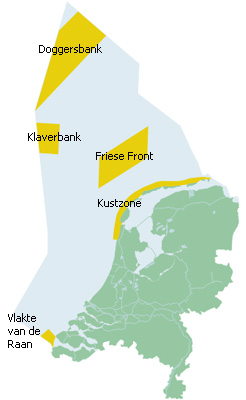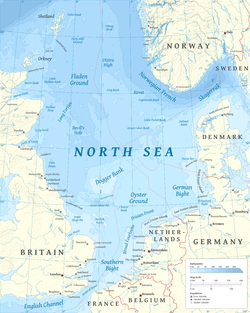
The Cleaver Bank (Dutch: Klaverbank) is a sandbank in the North Sea about 160 kilometres (99 miles) off the west coast of the Netherlands and south of the Dogger Bank. The size of the bank is about 1235 km2. The bank is 30-40 metres below sea level. [1]
The Cleaver Bank is an open-sea reef in the terms of the European Habitats directive and has been registered with the European Union as a Natura 2000 site. The bank originated as a terminal moraine of a glacier during one of the Ice Ages. [2]
The surface of the bank partly consists of gravel and larger cobbles. Due to the relatively great depth of the Cleaver Bank, the soil is only seldom, in very heavy weather, moved by wave action. [3] Because the gravel is relatively poor in silt and the transparency is great, there is enough light to allow for the growth of calcareous red algae. [3] The benthic fauna on the bank contains species that live on a hard substrate, such as sea anemones and polyps. [4] Rare species living on Cleaver Bank are Thracia convexa and the Rayed artemis . The bank is used by herring for spawning. [4] In addition, the soft coral type dead man's finger is found here.
A 60-metre-deep channel, called the Botney Cut, runs through the Cleaver Bank. Animals like harbour porpoises, minke whales, and white-beaked dolphin live there, mainly in the summer. [3]
